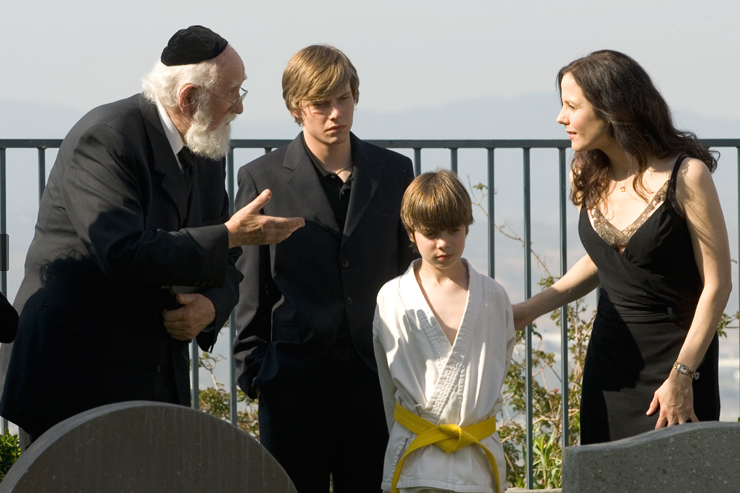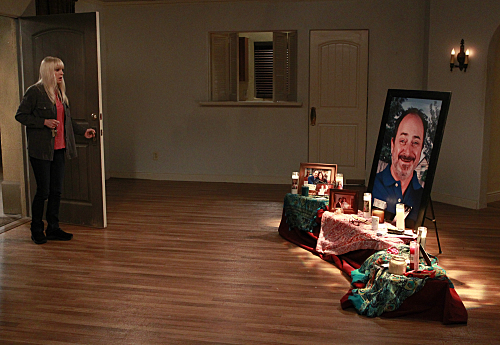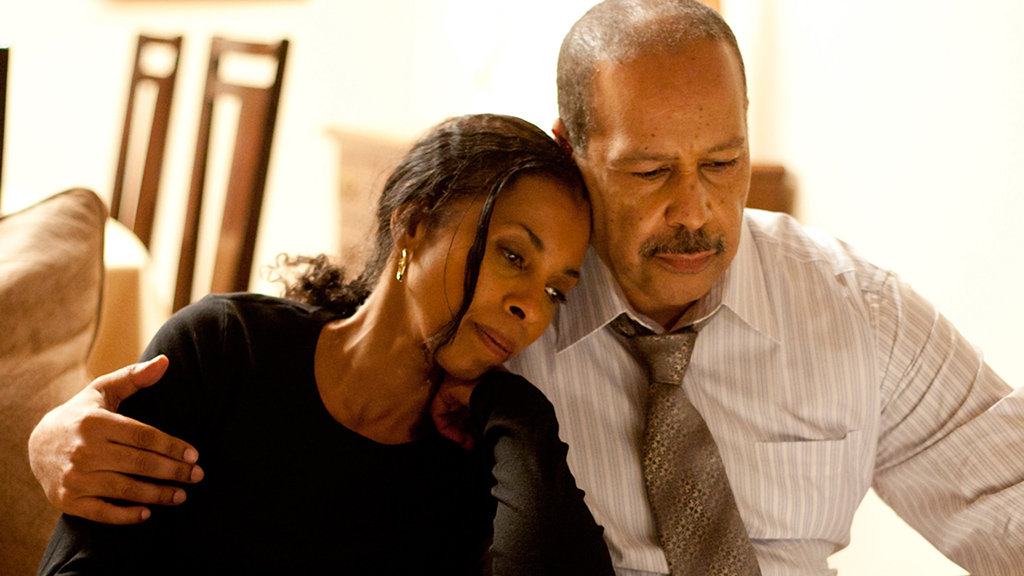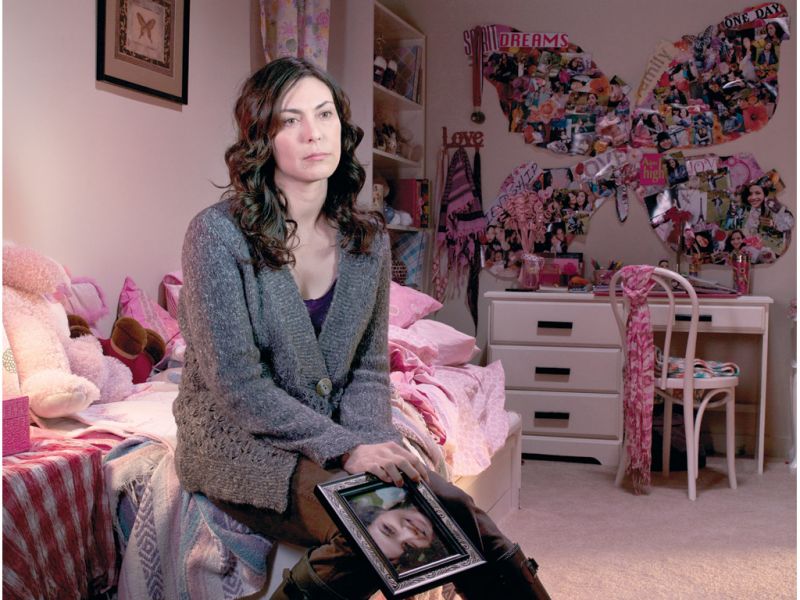 Before my memoir was optioned by NBC Universal, I noticed very few relatable examples of grief on TV. I could, however, name dozens of shows depicting sped-up, clichéd mourning.
Before my memoir was optioned by NBC Universal, I noticed very few relatable examples of grief on TV. I could, however, name dozens of shows depicting sped-up, clichéd mourning.
But when your experience as a 34-year-old widow is being fictionalized for the small screen, you take a crash course in small-screen grieving. So, which shows struck me as the most realistic? The ones addressing grief in multiple episodes and whose characters’ responses were destructive, nuanced or uncomfortable to witness. (You know, the ones that showed what it’s really like.)
The result is an exhaustive, though admittedly, subjective list of episodes that got it right. Spoiler alert: Specific plot points are mentioned, so proceed accordingly.
10. Weeds: “Punishment Light” and “Punishment Lighter” (Season 1, Eps. 8 – 9)
The suburban struggle of Nancy, a 30-something widow who sells weed to support herself and two sons, is both comedic and cringe-worthy. In response to losing his dad, the older son seeks a replacement figure in his girlfriend’s father. The younger experiments with violence and theft. Nancy drinks too much red wine and rejects the advances of a clean-cut divorced father — “I’m in no way ready for this” — only to have hate sex with a rival drug dealer and fall apart afterward.
9. Mom: “Kitty Litter and a Class A Felony” and “Cheeseburger Salad and Jazz” (Season 2, Eps. 12 -13)
Loss responses like grief replacement are treated with comic absurdity on “Mom,” but they are present. Also in attendance: Family in-fighting and will contesting after Christy’s dad dies; conversations with a three-foot shrine of the deceased; meltdowns over minutiae; attraction to men who look like the deceased; and bickering over what “normal grief” looks like.
8. Scandal: “Randy, Red, Superfreak and Julia” and “State of the Union” (Season 4, Eps. 1-2)
Following the murder of her teenage son, First Lady Mellie eats and drinks her feelings in a strict wardrobe of Uggs and bathrobes. She establishes a daily ritual of visiting the cemetery, where she consumes a bag of potato chips atop her son’s grave. Eventually, Mellie dons a cocktail dress and waves to the cameras, but the moment she’s out of the public eye, she collapses in a grief puddle. Having witnessed the effect of my only sibling’s death on my mom, this scene captured the duality of every mother who feels forced to grieve privately and wear a brave face in public.
7. E.R.: “The Letter” and “On the Beach” (Season 8, Eps. 20 and 21)
These two episodes chronicle Dr. Green’s death from inoperable brain cancer. He has voluntarily stopped chemo and refuses to spend his final days in a hospital in Chicago, heading to Hawaii with a bucket list and his reluctant teenage daughter. Among his many acts of closure, Dr. Green dictates letters to his wife for his two children to open on their graduations and weddings. While his death isn’t painless, he seems to have faced it on his terms.

Image courtesy of EW
6: The Good Wife: “The Last Call” (Season 5, Ep. 16) and “Mind’s Eye” (Season 6, Ep. 14)
Time slows down following the murder of beloved character Will Gardner. We clearly feel Alicia’s incredulity that birds continue to fly and the earth continues spinning. Alicia, who had an affair and subsequent falling-out with Will, keeps replaying the last — and lamentably short —voicemail he left her. She allows her imagination to morph the message into a longer version that exploits her guilt but ultimately creates a fantasy version where he wants to reconcile. A year later, a song transports her back to a sexual encounter she presumably had with Will. On a hotel balcony in her mind’s eye, they embrace and again play out the conversation Alicia wishes they’d had. The fantasy is brief but universal: Who among us hasn’t returned and re-scripted final conversations with our deceased loved ones?
5. Glee: “The Quarterback” (Season 5, Ep. 3)
The episode addressing actor Cory Monteith’s death begins a month after his character’s death. Instead of a predictable funeral scene, the audience experiences Finn’s loss through gaping holes in the lives of his family, friends, teachers and girlfriend. We witness a hysterical breakdown from the emotionally guarded Santana; Mr. Shue’s uncharacteristic inability to express his feelings; Puck angrily throwing chairs and words; and Finn’s stepbrother, Kurt, vacillating between denial and acceptance. Finn’s mom loses her shit while packing up his room — “I should do it now or I’m afraid I’ll never be able to” —but instead of feeding her platitudes, the other characters gather her in a group-hug and sob together. Arguably, the episode’s most authentic statement comes from the show’s villain, Sue: “There’s no lesson here. No happy ending. He’s just…gone.”
4. Treme: “Accentuate the Positive,” “Can I Change My Mind?” “Feels Like Rain” and “That’s What Lovers Do” (Season 2, Eps. 1, 6, 8, 10)
“Treme” is about a city mourning its pre-Katrina existence, and the many lives, homes, legacies and livelihoods lost in the storm. Grief rituals appear in multiple episodes, and an entire season portrays a family torn apart by suicide. From honoring the dead through music, ceremony and YouTube rants to the awful practicalities stemming from loss, Treme fearlessly confronts what it means to miss New Orleans (and its late residents).
3. The Killing: “Ghosts of the Past, “Openings” and “72 Hours” (Season 2, Eps. 5, 6, 10)
Historically, procedural dramas solve a crime without showing how the victim’s family is impacted. “The Killing” is brave in its willingness to go beyond the shock of the news and into the dark corners of a family in deep mourning. The second season follows them through denial, escapism and grief replacement. The grieving dad leaves a heart-rending message on his dead daughter’s voicemail. He boxes up her bedroom because he’s a professional mover — but his wife isn’t ready for this level of finality and unpacks everything. A new dog is bought to distract siblings from their sister’s absence. Mom goes on an indefinite solo road trip, hooks up with a stranger and befriends a runaway her late daughter’s age (who also robs her). The aforementioned moments are terribly uncomfortable to watch. But many of us have acted on those sorts of impulses, and there’s a certain comfort in knowing we’re not alone in our irrationality or whims.
2. The Affair: Eps. 1-10 (Season 1)
Very early in the season we know 20-something Alison has embarked on an affair with an older, married father of four. We see the cracks in her own marriage and guess at the root cause: The recent death of her four-year-old son, Gabriel, whose grave she regularly visits to read “Peter Pan” aloud. Alison’s unresolved grief is evidenced in binge drinking, a cutting habit and the distraction of an extramarital affair. The season finale exposes the grit of her loss: We witness blame from other family members; her guilt and suicidal tendencies; and grief’s toll on her marriage. On my end, I have yet to meet a couple whose marriage is stronger after the death of a child. Yet prior to this show, TV has largely ignored this reality.
1. Six Feet Under: Eps. 1 – 63 (Season 1 – 5)
Set in a family-owned funeral home, every episode of this dark comedy begins with a death of someone whose service will be arranged by Fisher & Sons. In the first season, the central characters are messily grieving Nathanial Fisher, patriarch and owner of the family business. Nathanial reappears to his three kids throughout the entire series as a narrative device revealing their fears, hopes and guilt to the audience. After the oldest son’s wife drowns at the end of Season Three, his storyline for the following season centers on his grief and struggle as a single parent. Thirty-something Nate awkwardly joins a bereavement group of senior citizens, confuses a hook-up for an intimate connection and believes his wife is still alive after visiting a psychic. He pursues and marries his ex — then cheats on her with his stepsister.
Grief functions as a central character in this series. The show’s high ratings and critical acclaim proved that viewers are willing to engage with it. If mainstream networks start taking risks like this, the TV landscape may one day resemble a grief-positive place.
* Series streaming on Netflix, Hulu or iTunes were favored for instant access.
Tré Miller Rodríguez is the author of “Splitting the Difference: A Heart-Shaped Memoir” and the popular tumblr WhiteElephantInTheRoom.com. Her essays appear in The New York Times, Marie Claire and on MindBodyGreen.com, and she overshares at @tremillernyc.

















